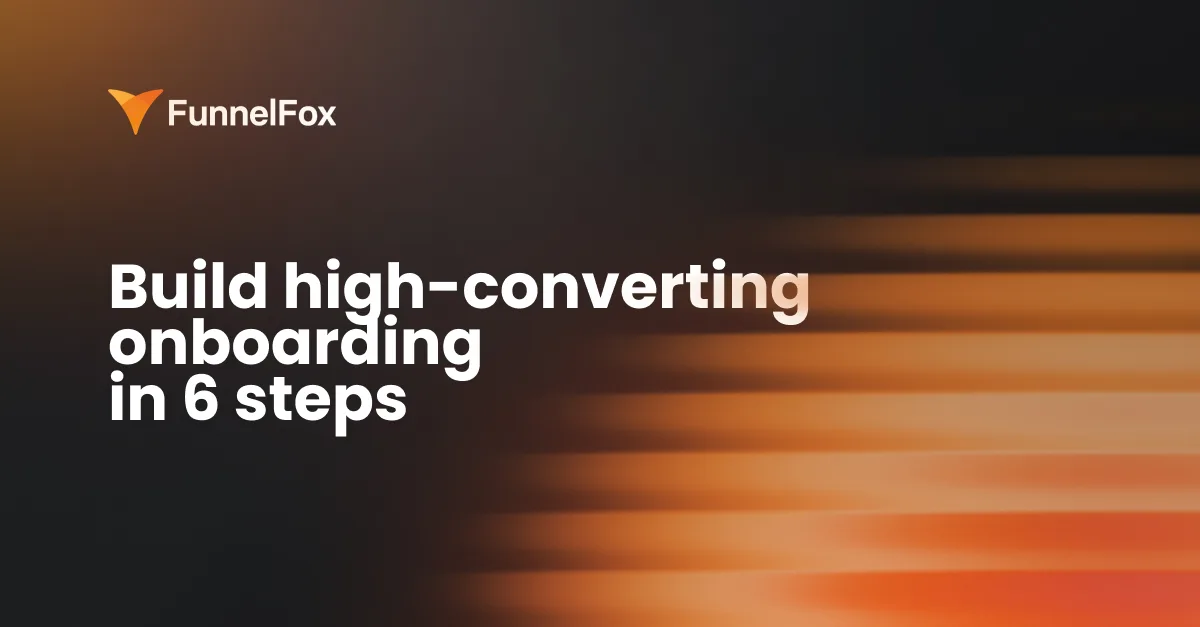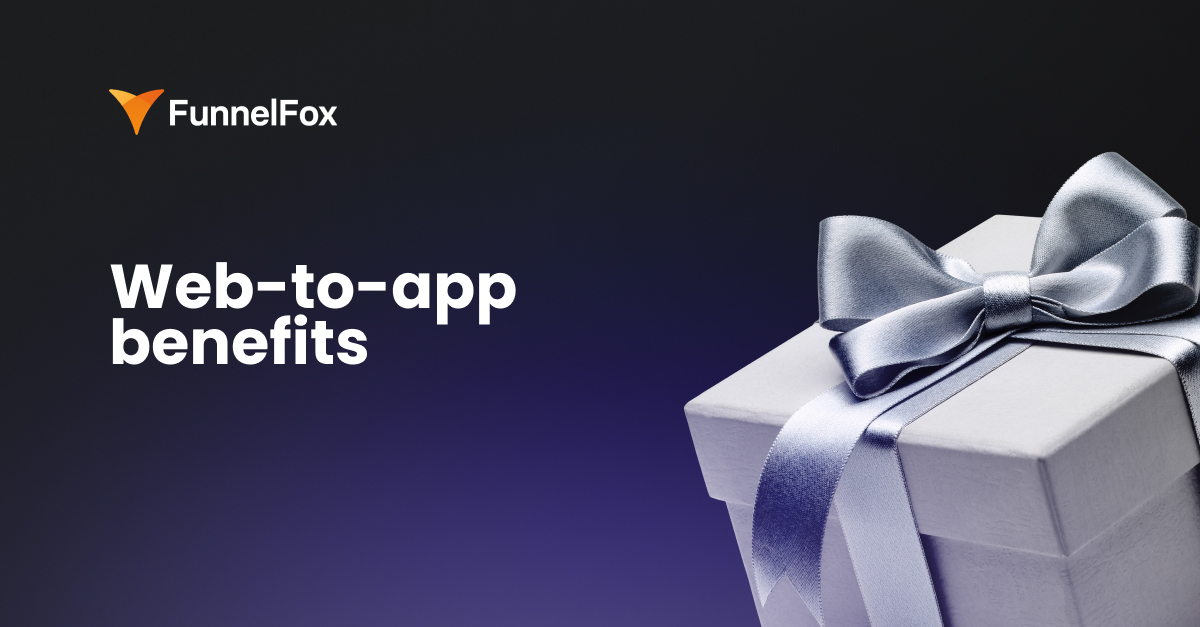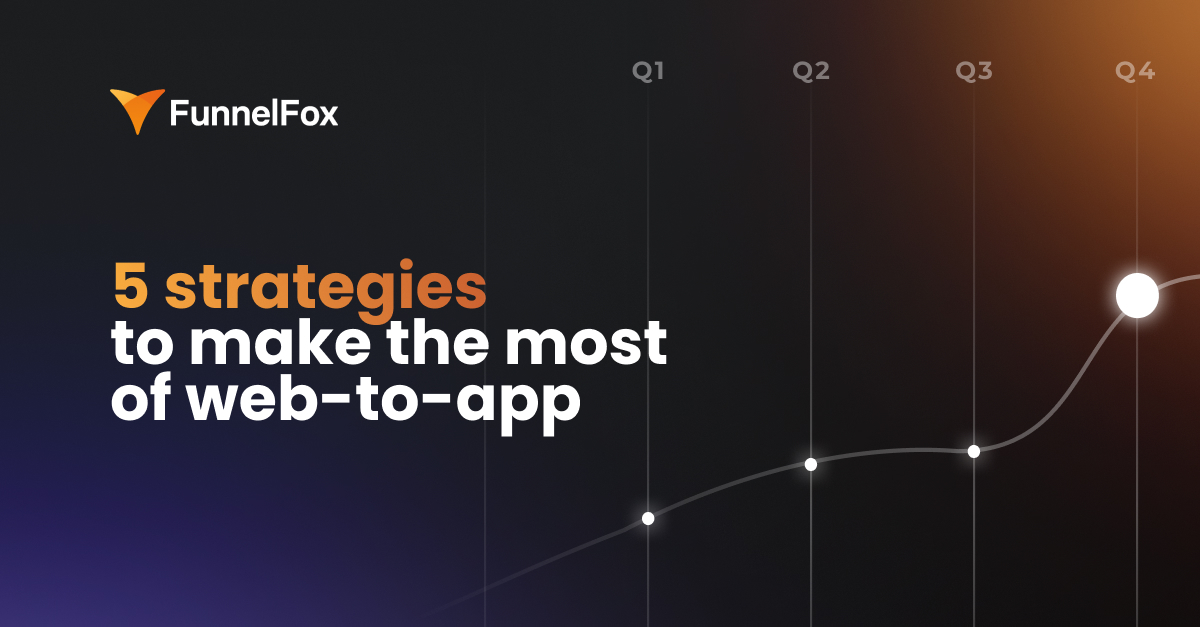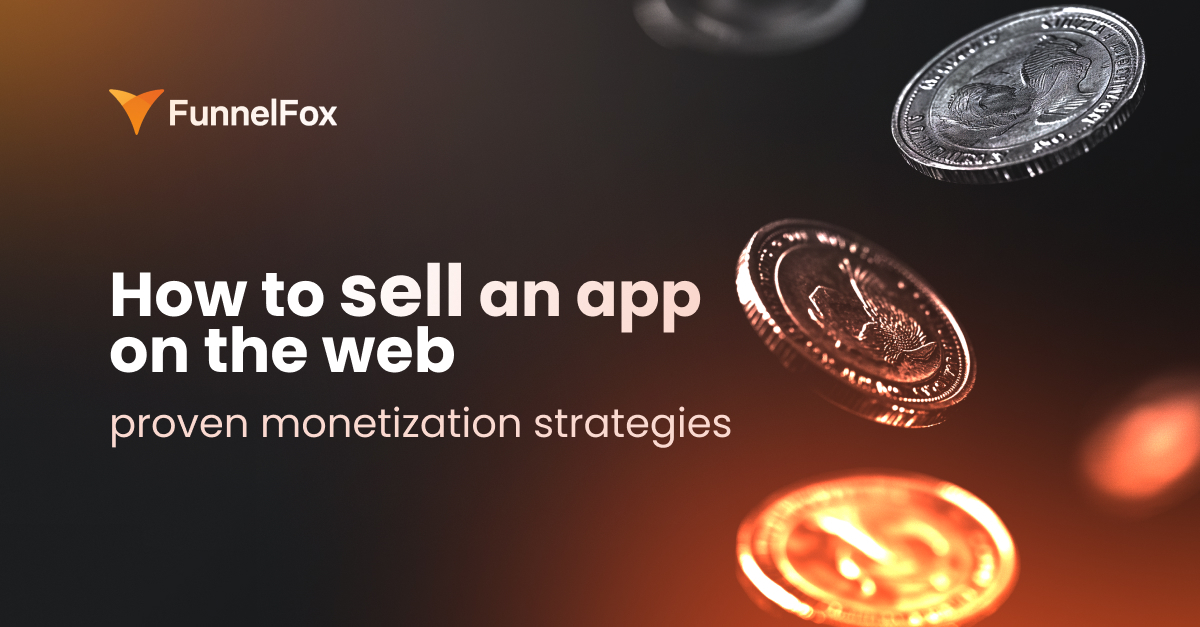Creatives are what your web-to-app strategy starts from — they generate traffic and drive potential users. But how do you turn clicks on ads into purchases? With effective, accurately crafted web onboarding.
What is web onboarding?
Web onboarding is a sequence of interactive screens shown after a user clicks an ad but before they see the paywall. It bridges the gap between acquisition and monetization and turns cold traffic into paying users. Web onboarding funnel serves three critical purposes:
- engage users
- build trust
- set the right expectations
But how to create a web onboarding? What elements to include? Where to get ideas for app onboarding screens? How to make your web-based onboarding convert?
Answers to these and other questions you might have about web onboarding you’ll find below.
How to create an effective web onboarding funnel
The question we’re asked over and over again: how many screens to include in web onboarding?
Here’s our take: onboarding length is overrated. As long as your app onboarding engages users, builds trust, and makes them ready to commit, it has a sufficient number of screens.
What matters is a consistent, user-centered storyline where users feel seen and understood. Creating such an onboarding funnel takes 6 steps:
- Engage
- Understand the user’s goals, pains, and context
- Build trust
- Provide personalized feedback
- Show expected results
- Personalize the offer or upcoming results
Let’s unpack each step.
Step 1. Engage
About half of your leads won’t make it to the second screen. Experiment to find the message that hooks users right out of the gate and sparks curiosity, making them move down through the funnel. Two rules here:
- Tie the beginning of the onboarding funnel to the creative they just clicked. A consistent message makes users feel they’re in the right place.
- Keep it simple: it’s your first interaction, and users aren’t ready yet to get through the sophisticated flow. Ask a question, add a loader — that’d be enough to give you an extra 10-15% conversion to purchase.
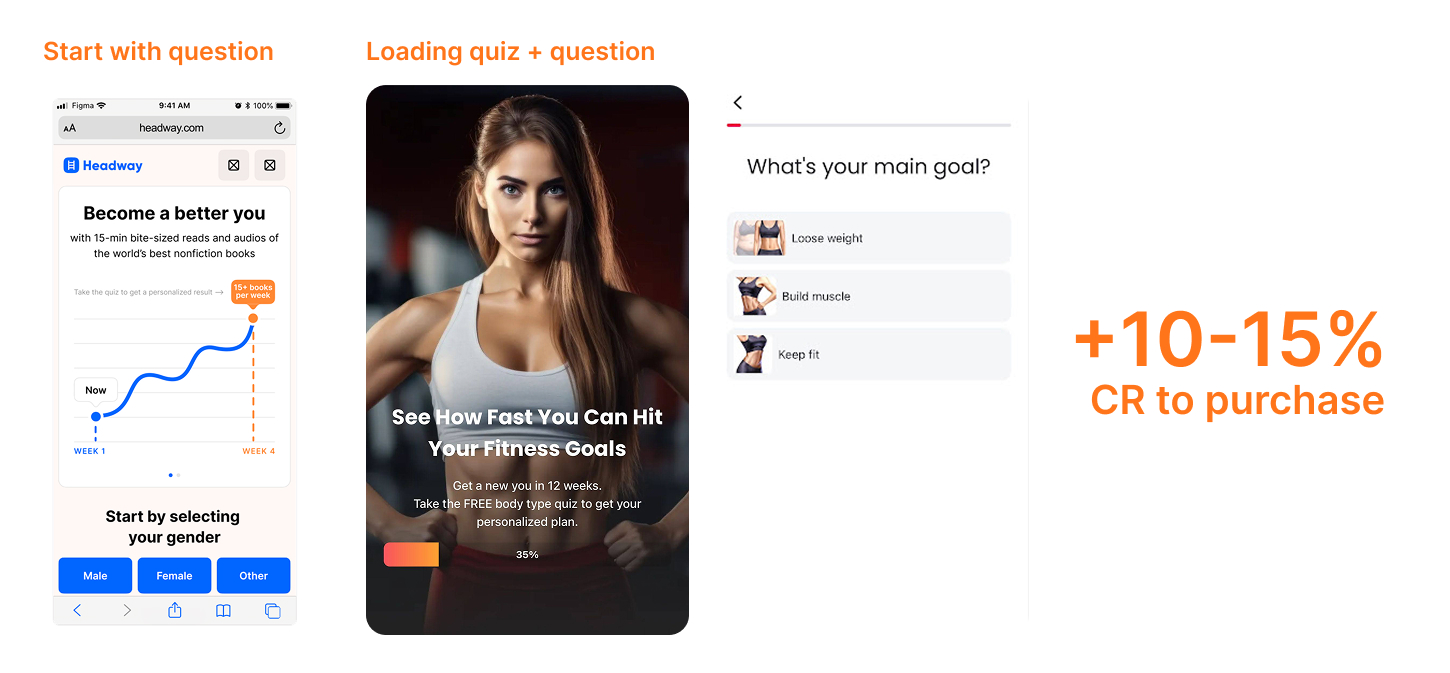
Step 2. Set the foundation for personalized experience by digging into users’ goals, pain, and context
Craft a deep onboarding funnel designed to understand your user’s goals, pain points, and motivations. The key is to ask relevant and purposeful questions, which allows you to align content and solutions with users’ needs.
How do you ask the right questions? The thing is that before you get to know your audience a little better, you must already know it well enough. Customer personas, user research and interviews, JTBD method, support logs — there are plenty of sources of information. After all, there’s good old competitor research.
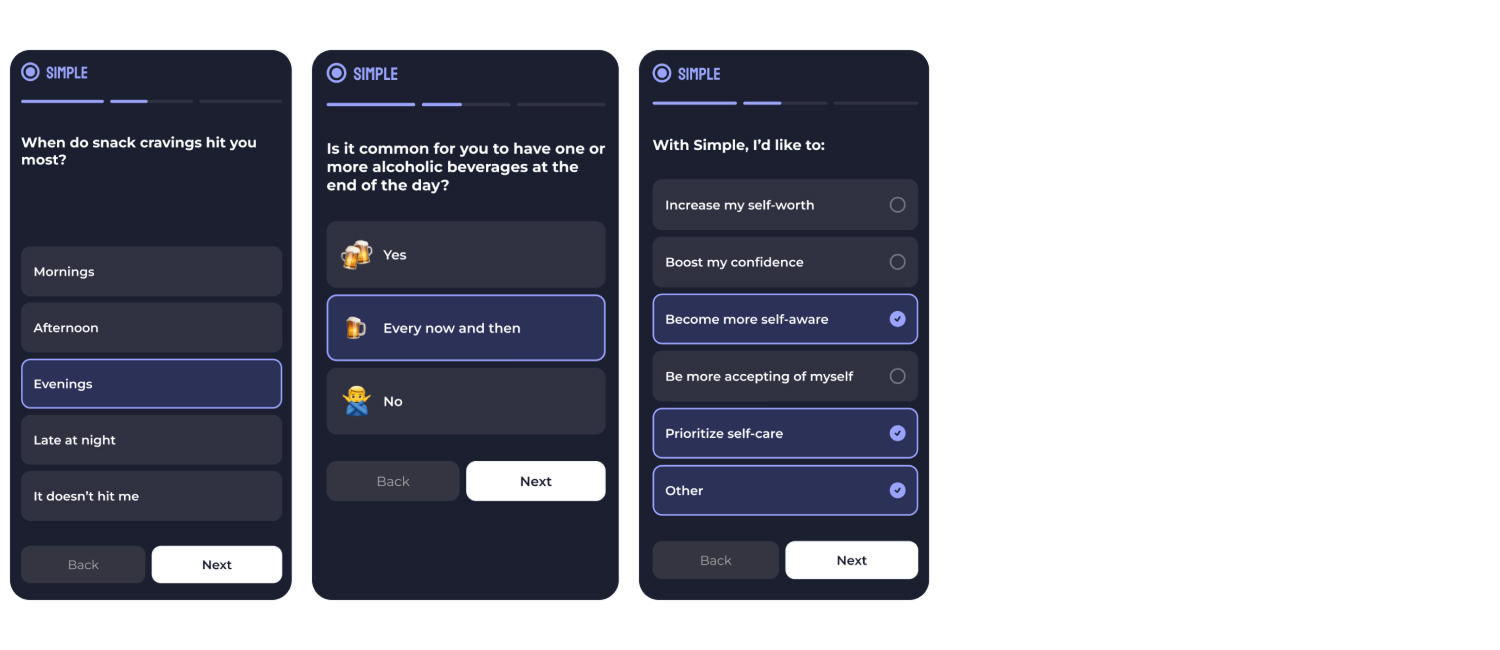
Step 3. Build trust
Once users are engaged, you should make them believe your app will help them reach their goals and that it’s worth their time and money:
- Share metrics or stats to highlight that a large number of people already use your app and trust it
- Showcase testimonials, user stories, and reviews
- Include recognizable logos (awards, media mentions, or partnerships)
The more evidence you provide, the easier it is for users to move forward in the funnel.

Step 4. Provide personalized feedback
Users share their info, and they expect you to give them something valuable in return. Provide feedback at the next step or immediately after a response. This way, you’re acknowledging users’ efforts, keeping them engaged, and reinforcing their commitment to continue.
Feedback doesn’t have to be complicated. Look how other apps are showing users they’re seen:

Step 5. Give a value sneak peek
The biggest boost to web-to-app conversion often comes from a value sneak peek. Offer users a glimpse of what they’ll gain: it can be a summary of their progress or a small piece of actionable advice. Think of it like giving them a free sample: just enough to make them want more.
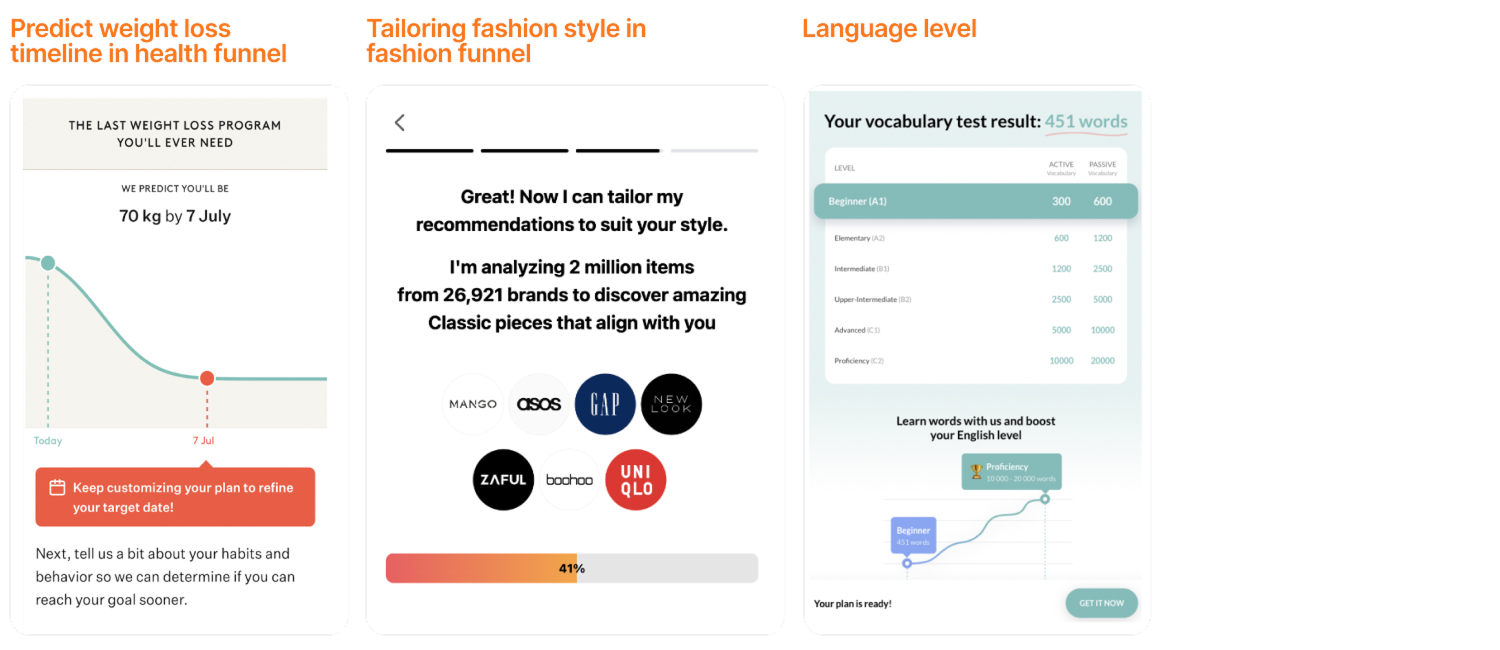
Step 6. Personalize the offer
A generic paywall won’t cut it — your offer needs to feel relevant to the answers from the onboarding quiz and tailored to the results they expect:
- Add personalization by incorporating details from the quiz responses
- Highlight the expected result by showcasing a «Personal Plan,» graphs, or before/after visuals that reinforce the value of your offer
- Incorporate FOMO and urgency by using timers or limited-time offers to encourage users to act quickly
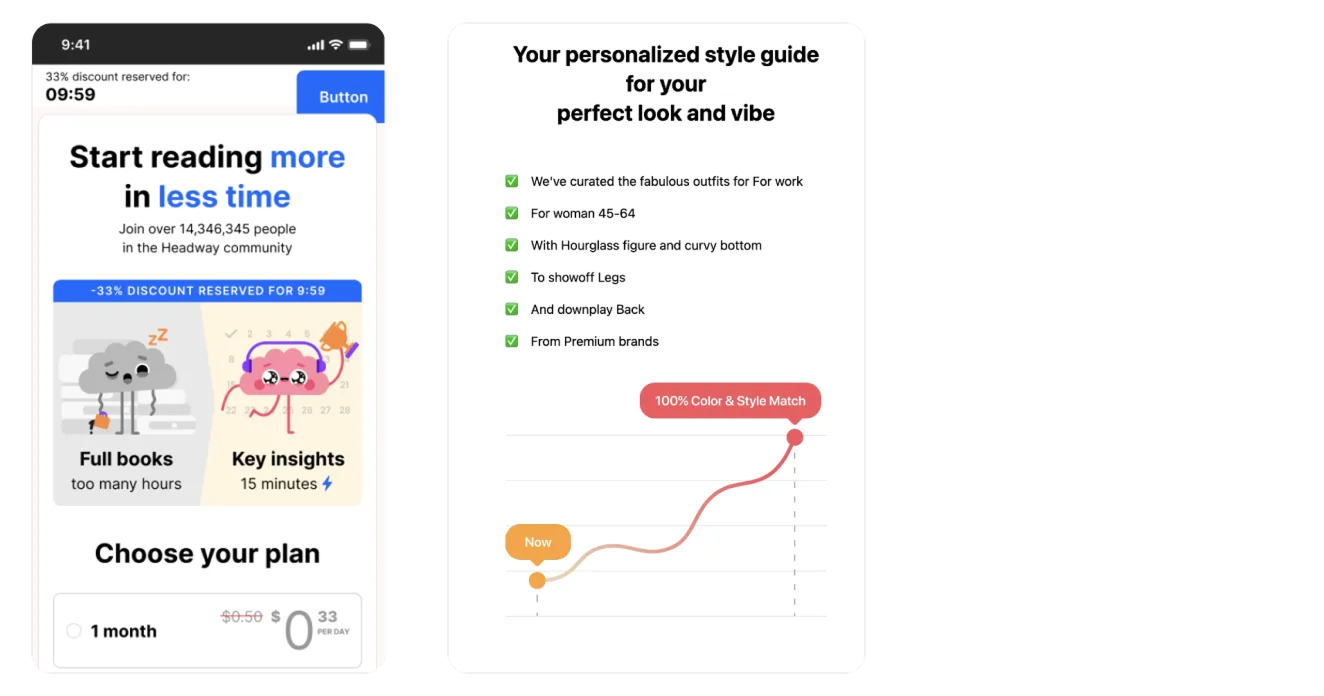
Where to take ideas for web onboarding
Explore others’ web onboarding screens
Not that we’re encouraging you to copy the competitors’ web-to-app funnels, but why re-invent what already works? The chances are your competitors have already gone through the trial-and-error phase to find strategies that work. Using their approach as a starting point gives you a proven foundation from which you can iterate and refine your own strategy.
Analyze similar products’ onboardings to find patterns
Look at common patterns in similar products and outline the entire scenario in bullet points. Then, you can use ChatGPT to generate quizzes and content based on your findings. Insert the generated content into the funnel, and you’re good to go.
Explore onboarding funnels of products from other niches
Analyze onboardings across different products to identify common storytelling patterns. Then, you can break it down: what questions are asked, what actions are taken, and how the storytelling is structured. Again, use AI to generate onboarding questions that align with identified patterns and integrate them into your funnel.
Use FunnelFox library of pre-built components to craft web onboarding in under 1 hour
You can also use FunnelFox funnel builder and onboarding templates. We’ve collected a library of pre-made components extracted from top-performing funnels that let you quickly craft a high-converting onboarding flow and a whole web-to-app funnel. Every component is battle-tested and proven effective — no guesswork, just what works.
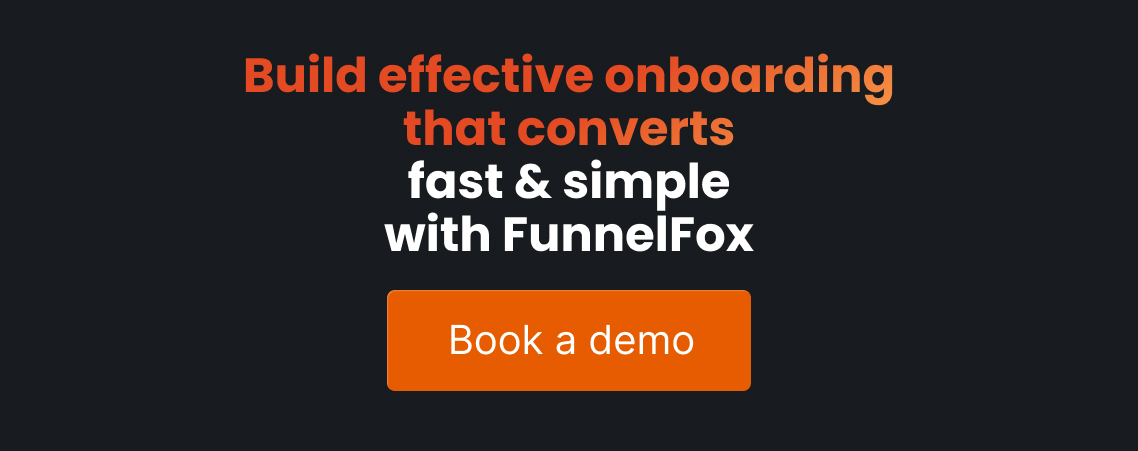
Extra web onboarding tips
Tailor onboarding funnel to user segments
Your onboarding screens can be far more impactful if tailored to specific audience segments. Personalize based on demographics like age, gender, or location helps to craft more relevant, relatable, and engaging experiences for each user group.
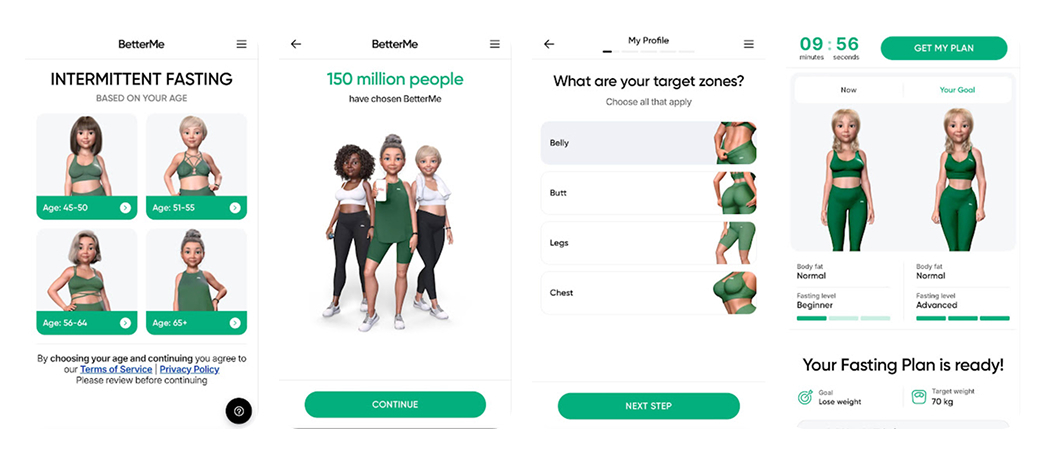
Add warming loaders
Use warming loaders to create a sense of customization so that your users feel you calculate a personalized solution just for them.
Incorporate segmented loaders at the end of onboarding funnel to give your users a strong sense of high-level customization.
To keep your user engaged during loading, include pop-ups with additional questions that complement and further warm them up, ensuring they stay focused and connected to the experience.

As an alternative to loaders, consider integrating a narrative into your value proposition. A well-crafted story can guide users through the onboarding screens while highlighting your product’s benefits. Just be sure the narrative matches user expectations and keeps them engaged throughout the process.
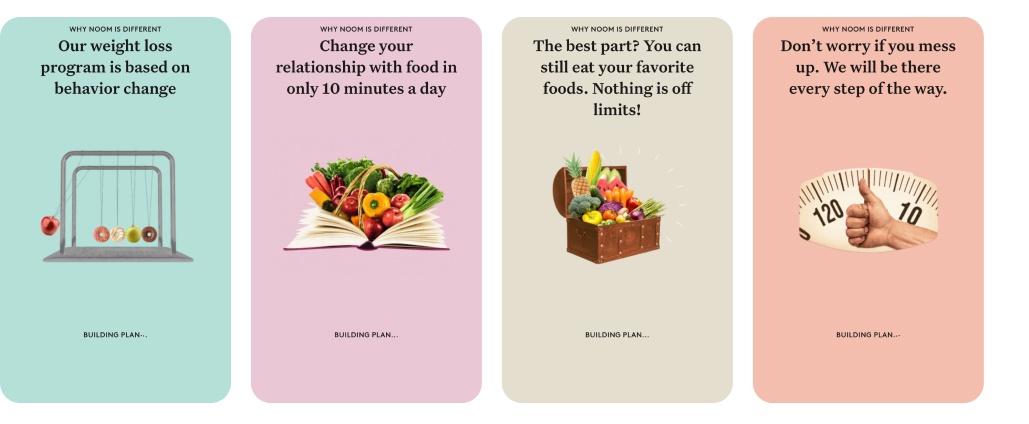
Collect emails
Email sequences can drive up to 30% of your revenue. Plus, it’s an opportunity to warm up users before the purchase, growing your CR.
To make collecting emails feel natural and non-intrusive, offer clear value. It could be something like “Enter email to get results.”
The best moment to request an email is right after the loader, but before showing the result. That’s how Noom does it:
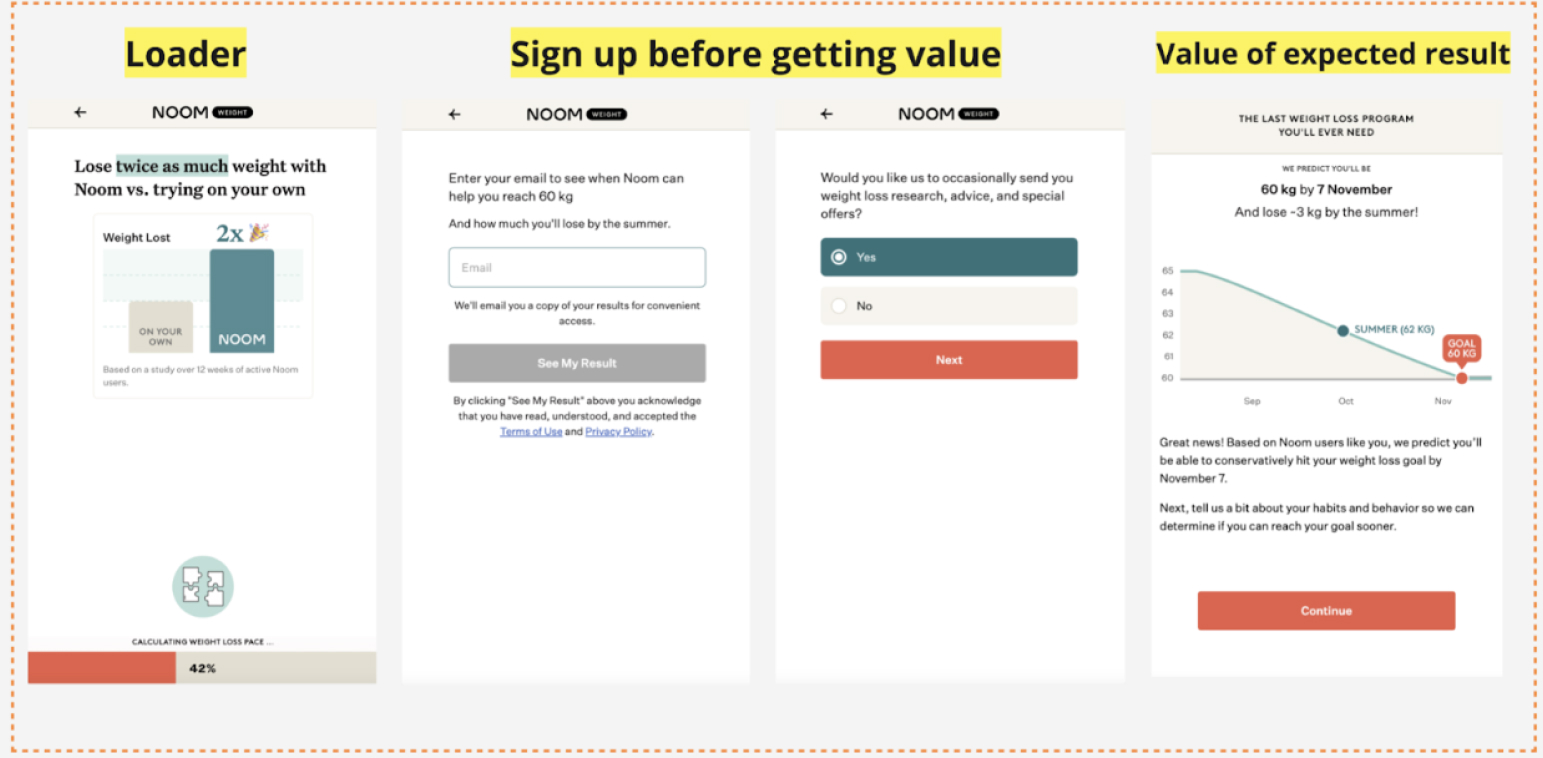
Onboard effectively with FunnelFox
Following these 6 steps and using extra tips we’ve covered, you’ll create a web onboarding that keeps your leads engaged from ad to paywall. The best part? Onboarding flows — and web-to-app funnels in general — don’t have to be a hassle.
With FunnelFox, you can launch the same day you decide to start. The platform features all you need: a library of ready-made components, a no-code onboarding builder, integration with third-party and payment providers, built-in A/B testing, and more.






